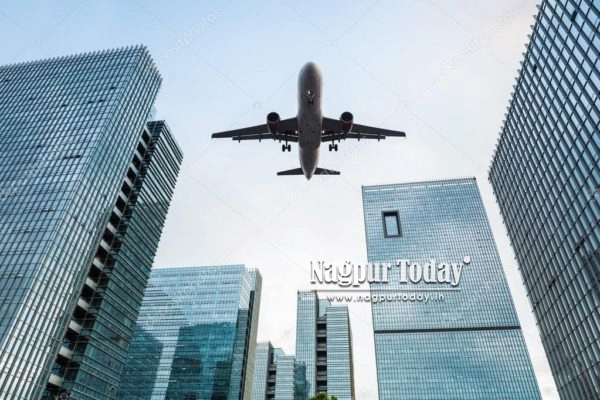Nagpur: In a clear example of how unregulated urban development can disrupt aviation safety, flights landing at Dr. Babasaheb Ambedkar International Airport are being forced to touch down nearly 450 metres into the runway, well beyond the standard touchdown zone, due to a cluster of high-rise buildings that have breached permissible height limits, reliable sources said.
Aircraft approaching Nagpur airport now have to modify their descent profile to stay high enough to safely clear these towering structures, which lie along the flight path and violate established norms. Aviation sources confirmed that this shift in landing alignment has been in place for over three years.
“Normally, aircraft begin their final approach and land near the threshold of the runway,” said a senior airport official. “However, here they must delay descent to remain clear of several buildings that exceed the regulated height. This results in landings taking place significantly farther down the 3,200-metre-long runway.”
Fortunately, Nagpur’s runway is among the longer ones in the country, allowing for flexibility. “If the runway had been shorter, say under 3,000 metres, this might have posed a much bigger safety issue,” the sources added.
The high-rises in question are located within a critical funnel zone near the airport, an area where building height is tightly regulated to ensure aircraft can descend without obstruction. According to MIHAN India Limited (MIL), which operates the airport, over 60 structures in the vicinity violate these norms, many due to unauthorised additions like rooftop water tanks.
MIL has already issued notices to the building owners. However, taking concrete action remains entangled in bureaucratic red tape. Under the Aircraft (Demolition of Obstruction) Rules, only the Directorate General of Civil Aviation (DGCA) is empowered to order demolition of such structures. A hearing in the matter was held over a year ago, but no final decision has been communicated yet.
On Friday, the issue came up once again during a routine review meeting conducted by the Airports Authority of India (AAI), which periodically assesses obstacles in the airport’s airspace.
For now, pilots continue to adapt, and the longer runway provides the required margin of safety. But with passenger traffic growing and more flights being scheduled, authorities say a resolution can’t be delayed much longer.
“The aircraft may be adjusting now, but the real question is, why should they have to?” said an industry observer. “The sky may be the limit, but only when the rules are followed on the ground.”















